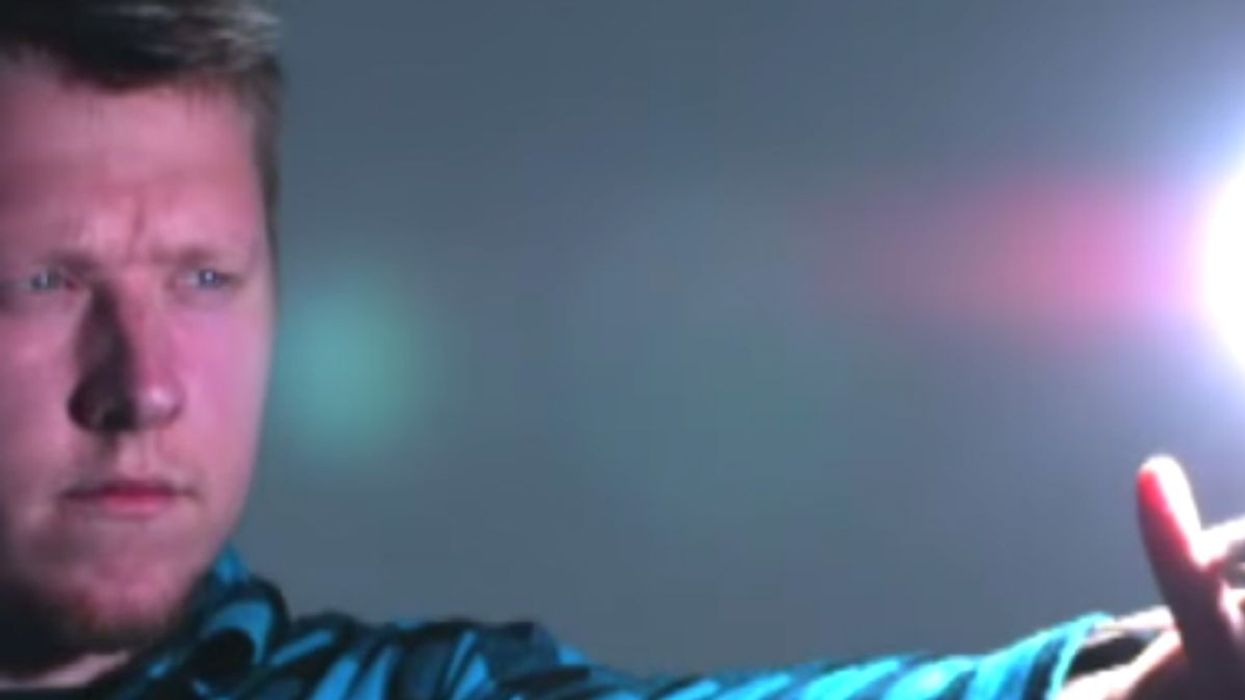There’s a feeling of an unknown trepidation when you enter the Black Lake, the centerpiece of the newly unveiled Bjork retrospective at the Museum of Modern Art. It’s very dark, and unnaturally quiet. There’s a chill in the air, and you know something is going to happen, but you’re not sure what. Completely vulnerable inside this dark abyss, you are free to exit at any point if the uncertainty is too much. But no one left while I was there.
Simply put, Bjork’s Black Lake is a vivid, 10-minute immersive film installation, a visual companion and tribute to the namesake single and focal point of Vulnicura, the musican and polyglot artist’s ninth studio album, released in January. In complex terms Black Lake, and the entire record for that matter, is the exposure of her open wound and the offering of her broken heart to the world.
The Black Lake installation is positioned toward the end of a multi-floored maze, which snakes to encompass a career that spans more than 20 years making music and driving pop culture; the cheekiness of her Academy Award swan-dress, the nostalgic viewing of her “Big Time Sensuality” video, the “All Is Full of Love” robots, designed by Chris Cunningham, and the intricately gorgeous Alexander McQueen gowns all welcome you to the final event.
If you’ve ever been abandoned by someone you once loved, Black Lake is what that sorrow would look, sound, and feel like. Entering this massive installation, built by an extensive team of collaborators, is like entering a gash that desperately wants to heal. Bjork has been candid about the inspiration for this album, a bittersweet homage to the end of her relationship with artist Matthew Barney that spanned over a decade. The two artists shared a life of love and artistic collaborations, as well as a now 12-year-old daughter.
So how exactly do you construct artwork that tells the complicated story of a love undone? Bjork entrusted artist and filmmaker Andrew Thomas Huang, who also shot her “Mutual Core” music video from Biophilia, which premiered at the Museum of Contemporary Art Los Angeles in 2012. His haunting film is projected on both ends of the theater.
The temporary architecture of the space was a collaboration between the 3-D design firm Autodesk, and architect David Benjamin of The Living, recipient of the 2014 Young Architect’s Program at MoMA PS1 and creator of Hi-Fy, a tower entirely made of fungus and compostable matter that lived in PS1’s courtyard.
Huang had suggested to Bjork that they reach out to Benjamin, and it was during their initial meeting a year ago that they discussed this large-scale project. Benjamin proceeded to present roughly 10 design options, which generated 40 drafts.
“We tried to work with a lot of moving parts,” Benjamin told GOOD a couple of days before the exhibition’s grand opening. “The idea was to create the kind of sound, in multiple ways, to support the song.”
The melancholy ballad itself, which Bjork says is still difficult for her to listen to, speaks of great despair and disappointment.
Benjamin says they weren’t necessarily going for a structure that would recreate that somberness, but would embrace it.
“We were certainly thinking something that was organic, that was tactical and raw,” he says.
The film was shot last summer on location in Iceland, the backdrop a complete landscape. Bjork is seen walking through moss fields, inside caves and ravines. The installation room also has a nature aspect to it. Its texture and shapes give it the look of a living organism.
The firm designed a lush acoustic environment made of 6,000 black felt cones, all uniquely shaped, outfitted with computers, cut out by robots, and stitched and assembled by hand. Sound is transmitted through 44 loudspeakers. What I had conceived to be a replica of the dark cave seen in the film is actually a map of the song.
“We used the audio file and took the spectral analysis to guide the formation of the room, the topography,” Benjamin says.
The song’s map created the landscape, which varied in dimensions, and determined the size and physical aspect to the cones. The map was then projected on the ceiling and walls.
“Every second of the song is one inch of the room,” Benjamin adds, “it’s kind of the groove in the record. It’s abstract.”
A couple of things to remember when inside the Black Lake. Stay until the very end in order to take in the full presence of the space. Move around the room while viewing the film. Lean on the walls for a tangible experience, and return to see and hear the film and encounter something entirely different.
“There’s an emotional art to the song,” says Benjamin, whose next project will be to partner with the City of New York to create a 200-foot floating pier in the East River that changes color according to water quality. “There’s a story and trajectory. The room is pretty dark, but then the film gets brighter, and the end is in daylight. The room reveals itself in time. You might feel it and see it.”
The end of the film shows Bjork, with her back to us, walking away. And I am reminded that, as she said, through the heartache, there is, eventually, a way out.
















 TikTok · Bring Back Doors
TikTok · Bring Back Doors 



 Label for Middle Earth Organics' Organic Tomato & Porcini Mushroom Sauce
Label for Middle Earth Organics' Organic Tomato & Porcini Mushroom Sauce "Judith Beheading Holofernes" by Caravaggio (1599)
"Judith Beheading Holofernes" by Caravaggio (1599)